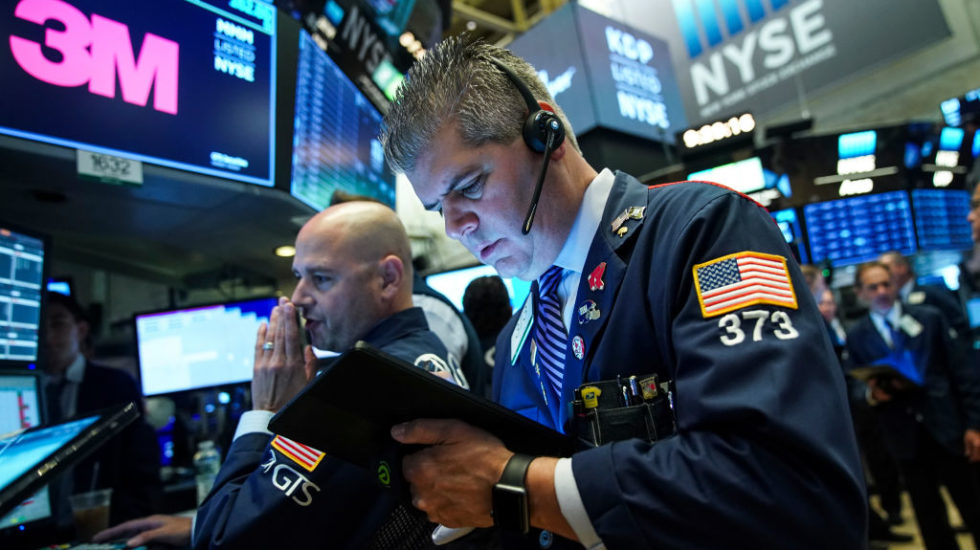Signs of a looming recession and other economic negatives spooked U.S. investors on Wednesday.
They may also spook President Trump, who’s counting on a continuing strong economy to bolster his re-election chances in 2020.
Stock prices plummeted after the bond market “flashed a warning signal that has an eerily accurate track record for predicting recessions,” reported CNN Business.
That warning sign is called an “inversion of the yield curve,” which is when the yield on 10-year U.S. Treasury notes falls below that of 2-year notes.
“Yield-curve inversions are considered one of the most-reliable leading indicators of recession in the United States, having preceded every economic decline in the past 60 years,” says MarketWatch.
“The equity market is on borrowed time after the yield curve inverts,” wrote strategists at Bank of America/Merrill Lynch, MarketWatch reports.
An inversion last occurred in 2007, heralding the global Great Recession, which began in December of that year and continued to June of 2009.
On Wednesday, the Dow Industrials fell 800 points, the S&P 500 dropped more than 85, and the Nasdaq fell around 250, all declines of about 3%.
Trump has been aggressively pressing the Federal Reserve to keep lowering interest rates to slow the economic slide, but Fed governors are reluctant to do so. At least one prominent conservative commentator believes it’s already too late.
Other economic developments also point toward a major downturn, not only in the U.S. but around the world.
Germany reported its economy shrank in the year’s second quarter, which ended in June.
“The German economy, the eurozone’s largest, has been particularly vulnerable to the trade war between the United States and China because of Germany’s dependence on manufacturing and exports,” reports the New York Times. “A second consecutive quarter of decline would mean Germany was technically in a recession.”
And China, with the world’s second-largest economy, reported a sharp drop in industrial production, falling to its lowest level since 2002.
Part of China’s problem — and America’s — is the trade war launched by Trump in the spring of 2018.
And as the Washington Post’s James Hohman puts it, “there’s no end in sight”:
“Trump’s insistence that he still plans to impose all the previously announced duties on Dec. 15 forces corporate chieftains to prepare for more troubled waters ahead,” Hohman writes. “Many analysts said the delay does nothing to mitigate the ominous clouds of uncertainty that hang over the economy. ‘Trade wars are good and easy to win,’ Trump said last year. That was wrong.”
Hohman adds that on Tuesday, “Trump came closer than he has before to acknowledging that his tariffs on Chinese imports are really taxes on American consumers. He’s been falsely claiming that the Chinese are paying the full price of his tariffs.”
After announcing he was putting off a planned 10% tariff on many Chinese-made consumer goods, ranging from sneakers to cellphones, Trump told reporters: “We are doing this for the Christmas season, just in case some of the tariffs would have an impact on U.S. consumers.”
